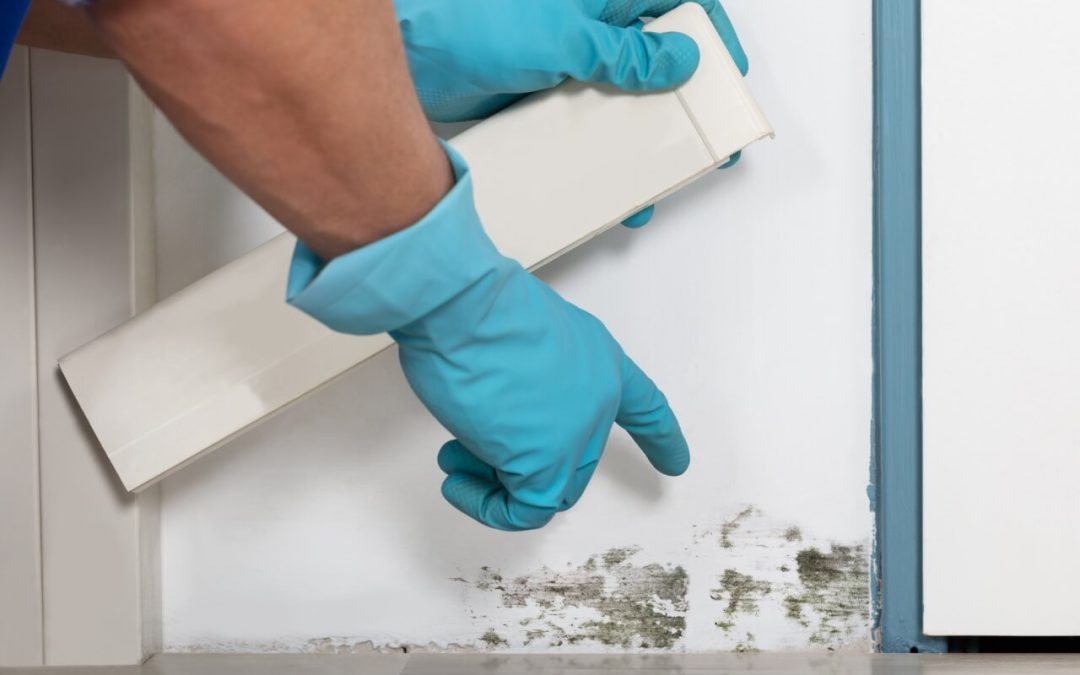Mold growth is a common concern for many homeowners. It is unsightly, poses health risks, and can damage your home’s structure. Mold flourishes in damp, dark, and humid environments, like basements, bathrooms, and crawlspaces. Preventing mold growth is easier and more cost-effective than dealing with its eradication. Here are four tips to keep your home mold-free.
Preventing Mold Growth
Keep Humidity Levels in Check
One of the most effective ways to prevent mold growth is to control the humidity levels in your home. The ideal indoor humidity should be between 30% and 50%. Measure humidity using a hygrometer, an inexpensive tool available at most hardware stores.
Use a dehumidifier to reduce moisture in the air. Boost ventilation by regularly opening windows and installing exhaust fans in high-humidity areas. Dripping faucets and leaking pipes contribute to mold-friendly conditions, so fix leaks immediately. Hang damp clothes and towels to dry or toss them in the dryer; never leave them in a pile on the floor.
Promote Proper Ventilation
Adequate ventilation helps prevent mold spores from settling in your home. Without proper airflow, moisture can accumulate on surfaces, creating conditions for mold to grow. To boost ventilation, use exhaust fans when cooking and showering. Keep doors in your home open to allow air to circulate freely, and install vents if the attic is damp or humid.
Preventing Mold Growth: Maintain a Clean Home
Regular housecleaning helps prevent mold spores from settling and spreading. Dust and vacuum often, and use a vacuum equipped with a HEPA filter for best results, as it can capture mold spores. After a spill, plumbing leak, or flood, clean and dry the affected area within 24 to 48 hours to prevent mold.
Repair Damage and Seal Surfaces
Sometimes, mold growth is due to underlying issues that may need repair. Water damage from leaks is a leading cause of mold. Keep an eye on your roof’s condition and call a professional to make repairs if you notice missing or damaged roofing materials. Make sure the gutters are clean and downspouts direct water away from your home’s foundation. If you have issues with dampness in your basement, use waterproof sealants on walls and floors.
With the above tips, you can create an unwelcoming environment to mold. Stay vigilant about these conditions in your home; you’ll enjoy a healthier living space and save on costly mold remediation.
FAQs
What are the common signs that indicate mold growth in a home?
Common signs of mold growth include musty odors, visible mold growth on surfaces (such as walls, ceilings, or floors), water stains or discoloration, peeling or bubbling paint, and allergic reactions such as sneezing, coughing, or skin irritation that worsen indoors.
How does mold growth affect indoor air quality and health?
Mold releases spores into the air, worsening indoor air quality and triggering respiratory issues, allergies, and asthma attacks. Prolonged mold exposure can lead to more severe health problems, especially for individuals with existing respiratory conditions or weakened immune systems.
Are there natural methods or remedies for preventing mold growth?
Yes, prevent mold growth by boosting ventilation to reduce humidity levels, using dehumidifiers in damp areas, regularly cleaning and disinfecting mold-prone surfaces with natural cleaners like vinegar or hydrogen peroxide, and incorporating moisture-absorbing materials such as silica gel or activated charcoal in closets or storage areas.
Can you prevent mold in all climates, or are there specific regions more prone to mold issues?
Mold growth can occur in any climate but is more prevalent in areas with high humidity and frequent moisture. Coastal regions, areas with heavy rainfall, and regions with humid summers are more prone to mold and mildew. However, adequate moisture control and ventilation help prevent mold growth in any climate.
How often should I inspect my home for mold growth, and what are the key areas to focus on during these inspections?
Check your home for mold growth at least once or twice a year or more frequently if you’ve experienced water damage or noticed musty odors. During inspections, focus on bathrooms, kitchens, basements, attics, crawl spaces, windows and doors, under sinks, and behind appliances where moisture may accumulate. Regular inspections identify concerns so you can address issues before they become more extensive and costly.
House2Home Inspection Services provides professional home inspections to customers in the Tampa Bay area and surrounding counties. Contact us to request our services.

